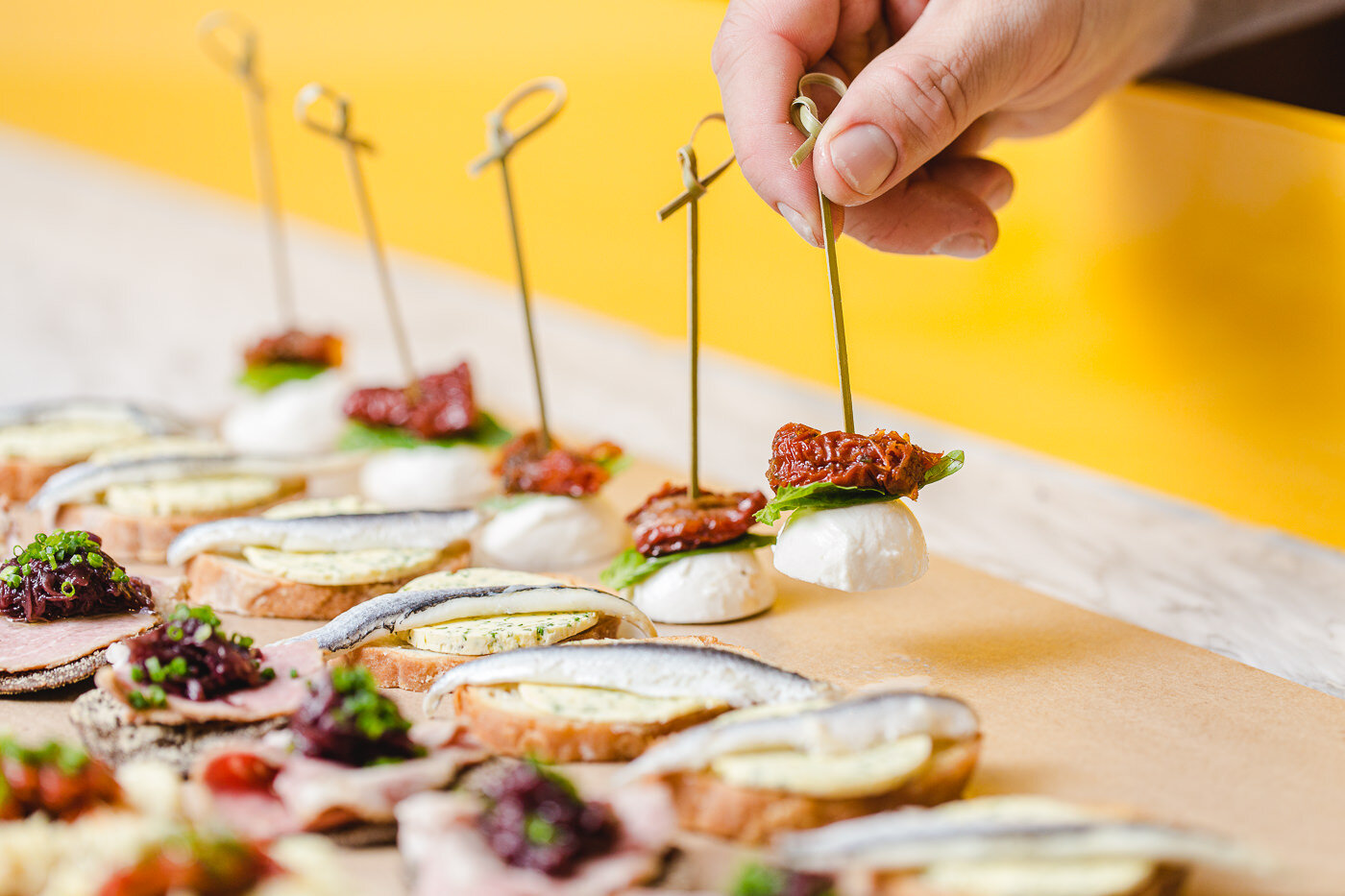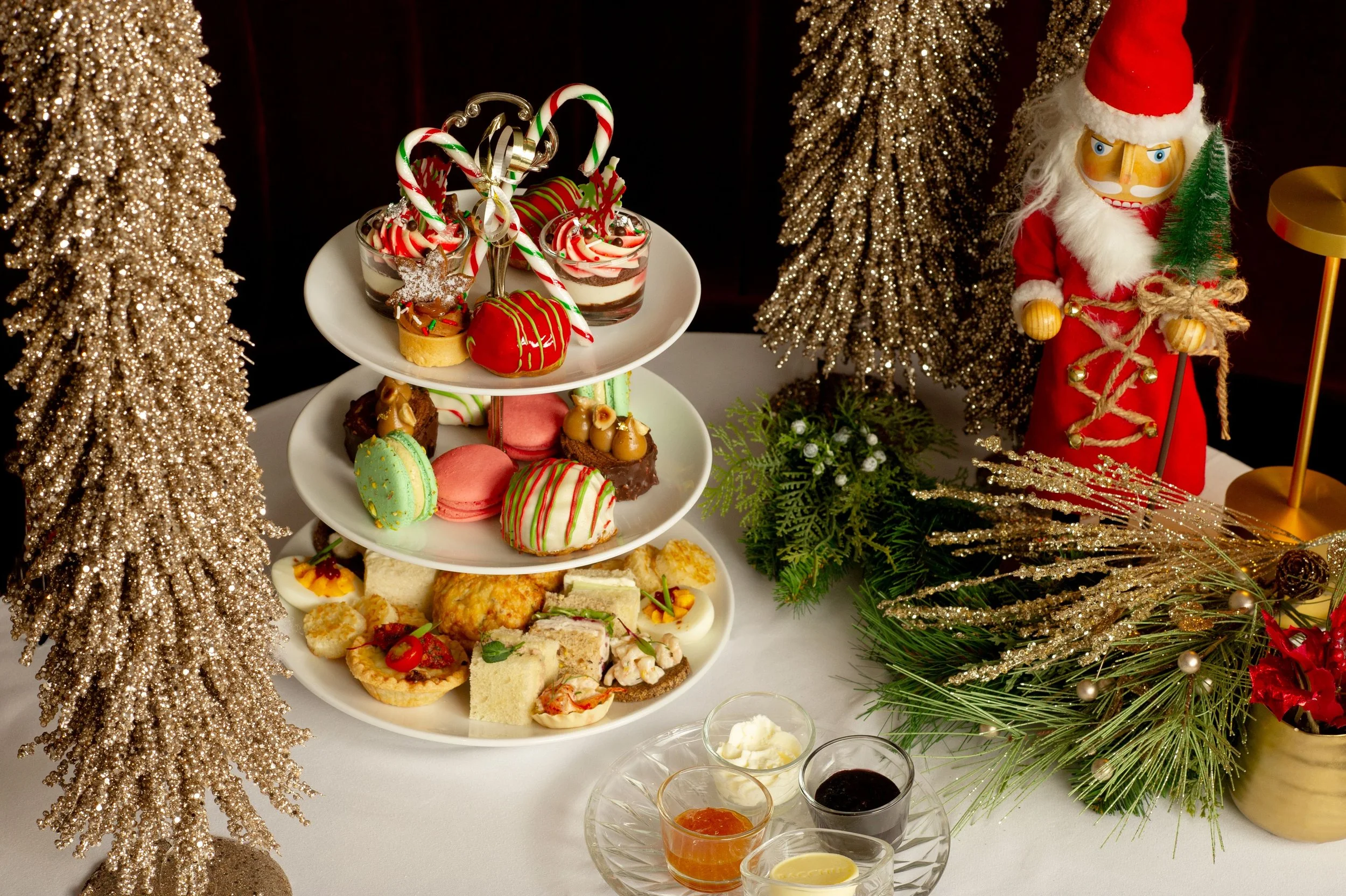Cichetti, vermouth, and wine: giovane bacaro evokes Venice beyond the touristy stereotypes
The new Vancouver restaurant combines aperitivo culture with dishes that strike a balance between Italy and B.C.
“Cicchetti are little snacks and bites that go hand in hand with a spritz or glass of wine,” says giovane bacaro chef de cuisine Scott Korzack.
ONE OF THE last places Matthew Morgenstern visited last year before COVID-19 brought the world to its knees was Venice. He’s on the team at Vancouver’s Kitchen Table Restaurants, which runs several dining spots, including Ask for Luigi and Di Beppe, and he admits he was reluctant at first to even go to the Floating City after hearing about problems there created by overtourism.
“It was quickly made apparent that those issues are very real,” Morgenstern tells Stir. “Fortunately, I was visiting during La Biennale di Venezia, an internationally renowned exhibition presenting the best in architecture and design. My appreciation of the city grew and I saw a community that embraced their art, culture, and history. Any city that supports these foundations always has an amazing culinary scene.”
It’s that non-touristy element of Venice that Kitchen Table is going for at giovane bacaro, one of the restaurant group’s newest ventures located on the lobby level of Fairmont Pacific Rim. Bacaros are typically unpretentious spots tucked on side streets in the City of Canals and throughout northern Italy.
“Bacaro” most simply translates to a “good bar”, with linguistic nods to ‘wine’—maybe from the ancient Roman “Bacchus”—and the Venetian expression far bacara, to have a party, make noise, and have fun,” Morgenstern says. “This is the aspect of Venetian culture that influences what we’re doing at giovane bacaro.”
What they’re doing combines aperitivo culture with dishes that strike a balance between Italy and B.C. Think products not widely used here such as baby octopus as well as Italian salumi, cheese (try the taleggio with rhubarb or the bufala al glera with honey), and speciality items imported by Valoroso Foods mingling with produce from Delta’s Cropthorne Farms and Solstedt Organics. (The latter is near Lytton, and the off-grid, solar-powered farm survived the fire.) Nearly a dozen local purveyors make up giovane bacaro’s suppliers.
Central to the menu are cicchetti.
“Cicchetti are little snacks and bites that go hand in hand with a spritz or glass of wine,” says bacaro chef de cuisine Scott Korzack, formerly of Ask for Luigi (also part of Kitchen Table Restaurants), Autostrada, and L’Abattoir. “They are half of what creates a bacaro and they enhance an aperitivo experience.
“I tried to look at classics found in a Venetian bacaro and transport them into our neck of the woods,” he says, pointing to a current feature as an example: a lightly spiced, nicely cooked slice of veal striploin comes with preserved porcini mushrooms and a fresh cherry. “This bite represents wonderfully how we see our location—great products from our backyard intertwined with great Italian products.”
Other cicchetti include olives marinated in olive oil, spices, and citrus; baccala mantecato (whipped salt cod with grilled polenta and salsa rossa); and polpette di carne (a meatball made of pork and olive sausage). Freddo (cold) dishes range from smoked sablefish in saor to amberjack crudo; a standout is adding whole soft-shelled crab to the endive salad with hazelnut-sourdough crumb, tomato aioli, and Reggiano. Hot items run the gamut from risotto di go in an aromatic broth studded with salmon roe to halibut cheeks nestled in chard with lentils, guanciale, and tomato marmaletta. Noodles, naturally, appear in various shapes and flavours; warm spices deepen the flavours of duck ragu in bigoli con anatra with Reggiano, while nettles, Romano beans, and sheep’s milk ricotta feature in the garganelli-based pasta primavera.
Gianduiotto is a chocolate and hazelnut semi-freddo with extra-virgin olive oil, salt, and caramel sauce.
Gianduiotto, on the dolci menu—a chocolate and hazelnut semi-freddo with extra-virgin olive oil, salt, and caramel sauce—just might be the best dessert in Vancouver right now. (Menu prices start at $3.50 for some of the cicchetti to $31 for linguine di mare with snow crab, spot prawn bisque, semi-dried tomato, and basil.)
“I love the simplicity and challenge of Italian cuisine,” Korzack adds. “When food is simple, there is nothing to hide behind. In order to create something great, you need to source great products and cook with respect.”
The wine list showcases small family-run wineries of northern Italian as well as a handful of B.C. standouts, like La Stella’s 2016 Sangiovese Arioso. An enomatic wine machine, which reduces the speed of oxidization, means every wine is available by the glass.
Vermouth figures prominently on the drinks list and in bottled bacaro cocktails, with the latter lineup also featuring a delightfully different Lambrusco Spritz with grapefruit juice.
“The focus on locality in the humble origins of vermouth and amaro’s conception is a state of mind pervasive in all of Italy, and Venice is no exception,” Morgenstern says. “A city that has historically been a transitory hub as a stop along the spice route, Venice has an identity that has been defined by constant flux. Its pride in its own culture is a testament to the importance of local cultural hubs such as the bacaro, a reliable stop along the way to the next destination.
"Of course, the local bar along the way to dinner may spontaneously become the destination itself in the act of experiencing it—much like the city of Venice and its reputation as one of the most legendary cities in the world after historically serving as a small spice port en route to a different place. At giovane bacaro we want guests experience a deeper understanding of Venice’s long history well beyond its touristy stereotypes.”
Strachitunt with mostarda is on the formaggi menu at giovane bacaro.
















